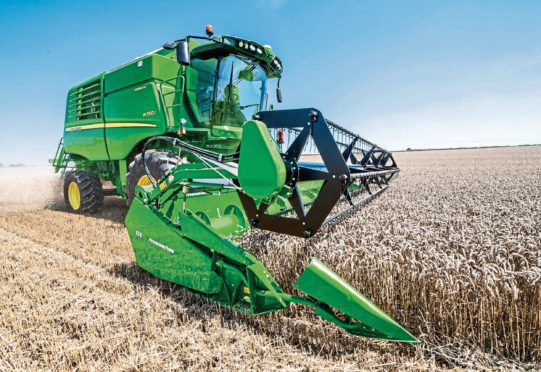New sensors to provide real-time data on grain quality are being developed by Reading University and John Deere.
The project, funded by European food innovation body EIT Food, aims to give growers real-time grain quality data in the combine at harvest.
Researchers have developed smart sensors, using a technique often found in medical sensory devices, to provide instant feedback on the quality of grains such as wheat, barley and oilseed rape.
“Our project is using near-infrared spectroscopy (nirs) to measure the quality of the grain samples being harvested from the field,” said John Hammond, professor of crop science at Reading University.
“Nirs analysers work by emitting a spectrum of near-infrared wavelengths at the grain sample and then measures the wavelengths reflected or transmitted through the grain.
“Based on the wavelengths detected and calibration models, it is possible to quickly and robustly measure many aspects of the grain’s constituents such as protein or oil content.”
Professor Hammond said nirs technology had been used for decades on farms and grain stores to check the quality of harvested products, but only on small sub-samples.
“We are working with John Deere, who is already known to offer a robust nirs sensor for forage harvester, manure tankers and as a stationary unit, to test and validate this technology,” he added.
Work is under way to connect the data gathered from the sensors with GPS location during harvest, to allow maps to be developed to show how grain quality varies across a field.
Professor Hammond said this will help growers optimise production by focusing resources on unproductive areas of fields, and reducing inputs on productive areas.
John Deere’s manager of technology innovation strategy, Dr Thomas Engel, said the sensors were “another important puzzle piece of precision farming technology” which would help farmers produce high-quality grain while reducing their impact on the environment.
